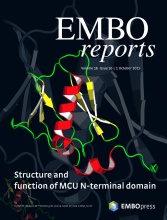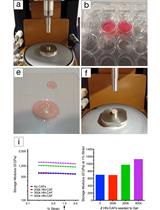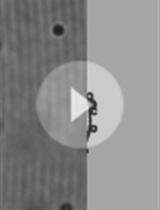- EN - English
- CN - 中文
Relative Stiffness Measurements of Tumour Tissues by Shear Rheology
通过剪切流变学测量肿瘤组织的相对刚度
发布: 2017年05月05日第7卷第9期 DOI: 10.21769/BioProtoc.2265 浏览次数: 11345
评审: Ralph BottcherVikash VermaCristina Rohena
Abstract
The microenvironment of solid tumours is a critical contributor to the progression of tumours and offers a promising target for therapeutic intervention (Cox and Erler, 2011; Barker et al., 2012; Cox et al., 2016; Cox and Erler, 2016). The properties of the tumour microenvironment vary significantly from that of the original tissue in both biochemistry and biomechanics. At present, the complex interplay between the biomechanical properties of the microenvironment and tumour cell phenotype is under intense investigation. The ability to measure the biomechanical properties of tumour samples from cancer models will increase our understanding of their importance in solid tumour biology. Here we report a simple method to measure the viscoelastic properties of tumour specimens using a controlled strain rotational rheometer.
Keywords: Shear rheology (剪切流变学)Background
The growth of solid tumours is accompanied by pathological remodelling of the native tissue (Cox and Erler, 2011; Bonnans et al., 2014). During progression, the local tissue environment experiences physical as well as biological changes, resulting in increased tissue stiffness (elastic modulus) (Humphrey et al., 2014). Alterations in the extracellular matrix lead to the generation of new tissue properties, which activate mechano-signalling pathways within tumour cells (DuFort et al., 2011). This outside-in signalling leads to altered behaviour, cell morphology, differentiation, proliferation, migration and stemness. In preclinical animal models of cancer, these changes have been shown to drive malignant progression and metastatic spread (Erler et al., 2006; Levental et al., 2009; Bonnans et al., 2014). Thus, as a result, the targeting of matrix remodelling and in particular stiffening has received substantial attention in recent years, and several clinical trials have been initiated (Barker et al., 2012; Baker et al., 2013; Cox et al., 2013; Miller et al., 2015; Madsen et al., 2015; Cox and Erler, 2016; Kai et al., 2016).
The mechanical properties of the tumour microenvironment can readily be examined using approaches such as atomic force microscopy (AFM) and nanoindentation (Akhtar et al., 2009). These approaches provide nanometre resolution and concurrent measurement of the applied force with picoNewton resolution (Kasas and Dietler, 2008). However, AFM is not applicable to understand the elastic properties of larger 3D samples. The mechanical properties of bulk 3D tumour samples can be more accurately examined using shear rheology (Picout and Ross-Murphy, 2003). Rheology is the study of how a material deforms when forces are applied to them. Thus applying shear stress to a 3D matrix can determine the elastic modulus (stiffness) as well as viscous properties of a bulk 3D tumour tissue. In this protocol, we describe a method to measure changes on tumour stiffness by shear rheology.
Materials and Reagents
- 1,000 μl sterile pipet tip
- 1.5 ml sterile microcentrifuge tubes
- Cell strainer, 70 µm (VWR, catalog number: 734-0003 )
- Hypodermic needles, 27 G (Fine-JectR) (VWR, catalog number: 613-2012 )
- 8 mm disposable biopsy punch (KAI, catalog number: BP-80F )
- Precision syringes, 1 ml (VWR, catalog number: 613-3908 )
- Standard scalpel #11 (Fine Science Tools, catalog number: 10011-00 )
- The 4T1 wild-type cell line was obtained from F. Miller at the University of Michigan
- The SW480, early-stage colon adenocarcinoma (Duke stage B) cell line was obtained from the American Type Culture Collection (ATCC) (LGC Standards) (ATCC, catalog number: CCL-228 )
- The SW480 + LOX cell line was derived from the parent line and has been previously described (Baker et al., 2011; Baker et al., 2013)
- For the human colorectal cancer model, 8-week-old female immunodeficient MF1 nude mice were used (Envigo [formerly known as Harlan Laboratories Inc.])
- For the murine mammary carcinoma model, 8-week-old female BALB/c mice were used (Taconic Biosciences)
- DMEM (Thermo Fisher Scientific, GibcoTM, catalog number: 31966047 )
- Fetal bovine serum (FBS) (Thermo Fisher Scientific, GibcoTM, catalog number: 10270106 )
- Penicillin-streptomycin (Thermo Fisher Scientific, GibcoTM, catalog number: 15140122 )
- Sterile PBS, pH 7.2 (Thermo Fisher Scientific, GibcoTM, catalog number: 20012068 )
- Trypsin-EDTA (0.25%), phenol red (Thermo Fisher Scientific, GibcoTM, catalog number: 25200056 )
- Ethanol
- Growth medium (see Recipes)
Equipment
- Benchtop Centrifuge capable of holding 15 ml tubes
- Pipette, P1000 (Gilson)
- Cell incubator at 37 °C, 5% CO2 (HERAcell)
- Standard glass haematocytometer
- Calipers
- Stainless Steel Spatula, One End Flat, One End Bent, 6 in. in length (United Scientific Supplies, model: SSFB06 )
- Standard pattern surgical scissors blunt/blunt (Fine Science Tools, catalog number: 14000-18 )
- 8 mm sand-blasted smart-swap upper geometry, Figure 1A (arrowhead) (TA Instruments)
- 8 mm sand-blasted stepped lower geometry, Figure 1A (arrow) (TA Instruments)
- Discovery Series Hybrid rheometer (TA Instruments, model: dhr-2 )
Procedure
文章信息
版权信息
© 2017 The Authors; exclusive licensee Bio-protocol LLC.
如何引用
Madsen, C. D. and Cox, T. R. (2017). Relative Stiffness Measurements of Tumour Tissues by Shear Rheology. Bio-protocol 7(9): e2265. DOI: 10.21769/BioProtoc.2265.
分类
癌症生物学 > 通用技术 > 生物力学试验
细胞生物学 > 组织分析 > 刚度测量
您对这篇实验方法有问题吗?
在此处发布您的问题,我们将邀请本文作者来回答。同时,我们会将您的问题发布到Bio-protocol Exchange,以便寻求社区成员的帮助。
Share
Bluesky
X
Copy link











